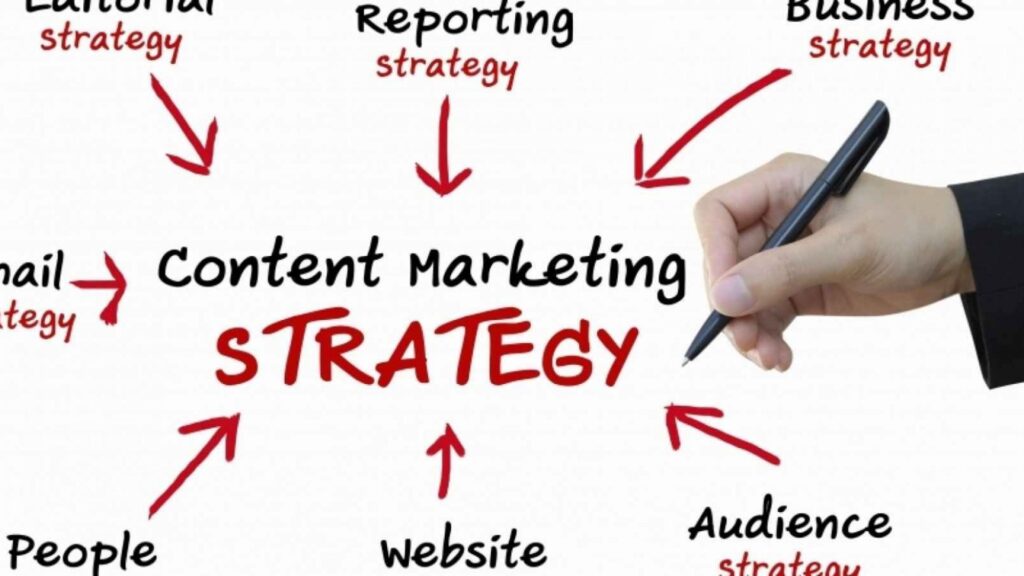8 Ways to Improve Student Experience & Boost Retention

In today’s competitive educational landscape, institutions face the ongoing challenge of not only attracting students but also ensuring their success and retention. A positive student experience is key to fostering engagement, satisfaction, and ultimately, retention rates. To address this vital aspect of education, here are eight effective strategies to enhance the student experience and boost retention: 1. Personalized Learning Paths: Recognize that each student has unique learning needs and preferences. Implement personalized learning paths that cater to individual strengths, weaknesses, and interests. Utilize adaptive learning technologies, student analytics, and faculty support to tailor educational experiences that resonate with each learner. 2. Comprehensive Support Services: Provide comprehensive support services to address students’ academic, emotional, and social needs. Offer tutoring, counselling, mentorship programs, and career services to help students navigate challenges, overcome obstacles, and stay on track towards their goals. 3. Engaging Learning Environments: Create engaging and interactive learning environments that foster collaboration, creativity, and critical thinking. Incorporate multimedia resources, hands-on activities, group projects, and real-world applications to make learning relevant and enjoyable for students. 4. Transparent Communication: Establish clear and transparent communication channels between students, faculty, and administrators. Keep students informed about academic expectations, course requirements, deadlines, and campus resources. Encourage open dialogue, feedback, and active participation to build a sense of community and belonging. 5. Embrace Technology: Harness the power of technology to enhance the student experience both inside and outside the classroom. Utilize learning management systems (LMS), mobile apps, virtual classrooms, and online collaboration tools to facilitate anytime, anywhere learning, and foster a culture of innovation and digital fluency. 6. Cultivate a Supportive Community: Create a supportive and inclusive campus community where students feel valued, connected, and empowered. Organize extracurricular activities, clubs, events, and volunteer opportunities to promote social interaction, networking, and personal growth. Foster a culture of diversity, equity, and inclusion that celebrates differences and promotes mutual respect. 7. Continuous Feedback and Assessment: Implement regular feedback mechanisms and assessment strategies to gauge student satisfaction, engagement, and progress. Solicit input from students through surveys, focus groups, and course evaluations to identify areas for improvement and make data-driven decisions to enhance the student experience. 8. Prioritize Student Success Initiatives: Make student success a top priority across all levels of the institution. Allocate resources, funding, and personnel to support student success initiatives such as academic advising, retention programs, faculty development, and research opportunities. Foster a culture of excellence and continuous improvement that empowers students to achieve their full potential. Conclusion: In conclusion, enhancing the student experience is essential for promoting student success and boosting retention rates in higher education. A digital marketing agency implements these eight strategies – personalized learning paths, comprehensive support services, engaging learning environments, transparent communication, embracing technology, cultivating a supportive community, continuous feedback and assessment, and prioritizing student success initiatives – institutions can create an environment that fosters student engagement, satisfaction, and ultimately, academic success. Together, let’s empower students to thrive and realize their aspirations in the pursuit of knowledge and lifelong learning.
Is Your Website Working For Your Business?

In the fast-paced digital landscape of today, having a strong online presence is essential for businesses of all sizes. Your website serves as the virtual front door to your brand, often making the first impression on potential customers. But is your website truly working for your business? As a digital marketing agency, we understand the critical importance of a well-designed and optimized website in driving business success. Let’s delve into why your website matters and how you can assess its effectiveness. The Importance of a Strong Website: Assessing Your Website’s Effectiveness: Optimizing Your Website for Success: In conclusion, your website plays a crucial role in the success of your business in the digital age. By assessing its effectiveness and implementing optimization strategies, you can ensure that your website is working hard to attract, engage, and convert visitors into loyal customers. As a digital marketing agency, we’re here to help you maximize the potential of your website and achieve your business goals in the online world.
Being Needed, Not Needy: How To Create Content People Want

It’s simple to create content just for the sake of making it, without thinking about whether it will actually resonate with your audience, in the wide digital environment of content creation. The secret to success is to produce material that satisfies a real need or want rather than inundating people with it. Put differently, it’s about being useful rather than selfish. So, how can you make sure that the information you offer is something that readers would genuinely be interested in? Now let’s discuss some tactics. Understand Your Audience The foundation of creating content that people want lies in understanding your audience. Take the time to research their demographics, interests, and pain points. What challenges are they facing? What questions do they have? By gaining insights into their needs, you can tailor your content to provide valuable solutions and information. Provide Value Your content should offer something of value to your audience. Whether it’s educational, entertaining, or inspirational, it should enrich their lives in some way. This could be through practical tips, in-depth analysis, or compelling storytelling. Always ask yourself: Does this content address a specific need or interest of my audience? Be Authentic Authenticity is crucial in today’s digital age. People are drawn to content that feels genuine and relatable. Don’t try to mimic other creators or adopt a persona that isn’t true to who you are. Instead, let your unique voice and perspective shine through in your content. Authenticity in content marketing builds trust and fosters a deeper connection with your audience. Listen and Engage Building a two-way relationship with your audience is essential. Listen to their feedback, comments, and suggestions. What are they saying about your content? What do they want to see more of? Engage with them genuinely, whether it’s through responding to comments, hosting Q&A sessions, or conducting polls. By actively involving your audience, you demonstrate that their opinions matter, and you can tailor your content accordingly. Stay Relevant The field of digital marketing is constantly evolving, and so are the needs and interests of your audience. Stay abreast of current trends, topics, and discussions within your niche. Keep your content fresh and relevant by addressing timely issues and providing insights into emerging trends. This shows that you’re attuned to the pulse of your audience and the broader industry. Quality Over Quantity In the age of information overload, quality trumps quantity. Instead of churning out content at a rapid pace, focus on creating high-quality, well-researched pieces that offer depth and value. A single piece of exceptional content can have a far greater impact than a dozen mediocre ones. Prioritize substance, clarity, and relevance in your content creation process. Diversify Your Content People have different preferences when it comes to consuming content. Some may prefer articles, while others gravitate towards videos, podcasts, or infographics. Diversify your content formats to cater to varied preferences and maximize your reach. Experiment with different mediums to see what resonates best with your audience. Optimize for Search and Social Make it easy for people to discover your content by optimizing it for search engines and social media. Use relevant keywords, hashtags, and meta descriptions to improve your visibility and reach. Share your content across various social media platforms and engage with communities related to your niche. By optimizing your content for search and social, you increase its chances of being found and shared by your target audience. In conclusion, creating content that people actually want involves understanding their needs, providing value, and fostering authentic connections. By focusing on being needed rather than needy, you can create content that resonates deeply with your audience and establishes you as a trusted authority in your niche. Remember to listen, adapt, and always strive to deliver content that enriches the lives of your audience.
The Evolution of Marketing Attribution: A Journey Through Time

The concept of attribution has undergone a remarkable evolution. From its humble beginnings as a rudimentary tracking tool to its current incarnation as a sophisticated analytics powerhouse, the history of marketing attribution is a testament to the relentless pursuit of understanding consumer behaviour and optimizing marketing efforts. The Early Days: Last-Click Attribution In the early days of digital marketing, measuring the effectiveness of advertising campaigns was a crude affair. Marketers relied primarily on last-click attribution, attributing all credit for a conversion to the last interaction a user had with a marketing touchpoint before making a purchase. While this approach provided some level of insight, it often failed to capture the full complexity of the customer journey. The Rise of Multi-Touch Attribution As digital marketing channels proliferated and consumer behaviour became increasingly complex, the limitations of last-click attribution became apparent. Marketers began to embrace multi-touch attribution models, which sought to assign value to each touchpoint along the customer journey. By tracking interactions across various channels and devices, multi-touch attribution provided a more nuanced understanding of how different marketing efforts contributed to conversions. Challenges and Innovations Yet, even multi-touch attribution had its shortcomings. Attribution models struggled to account for the interconnectedness of online and offline touchpoints, as well as the impact of factors such as time lag and ad viewability. However, advancements in technology, such as machine learning and data integration, have enabled marketers to overcome these challenges and develop more sophisticated attribution models. The Future of Marketing Attribution Looking ahead, the future of marketing attribution promises even greater advancements. As data collection methods become more sophisticated and consumer privacy concerns continue to shape industry practices, marketers will need to adopt new approaches to attribution that balance the need for insights with respect for user privacy. Additionally, the proliferation of artificial intelligence and predictive analytics will empower marketers to anticipate consumer behaviour and optimize marketing strategies in real-time. Summing it up The history of marketing attribution is a testament to the ingenuity and perseverance of marketers in their quest to understand and influence consumer behaviour. From the early days of last-click attribution to the cutting-edge predictive analytics of the future, attribution has played a vital role in shaping digital marketing strategies and driving business success. As technology continues to evolve and consumer expectations evolve, marketers must remain vigilant, adapting their approaches to attribution to stay ahead of the curve and deliver value to their organizations.
What is Digital PR and How Can You Develop an Effective Strategy?

Public relations (PR) has expanded to include a wider range of activities defined as “Digital PR” in today’s digital environment, moving beyond the traditional media outreach. This innovative marketing strategy makes use of digital platforms to improve brand recognition, engagement, and visibility. We’ll examine what digital PR is all about in this article and look at some tactics for creating an effective campaign. What is Digital PR? Digital PR involves utilizing digital platforms such as social media, online publications, blogs, influencers, and search engines to manage a brand’s reputation and connect with its audience. Unlike traditional PR, Digital PR focuses on maximizing online exposure, generating buzz, and fostering relationships in the digital realm. Components of an Effective Digital PR Strategy: Define Objectives: Begin by outlining clear objectives aligned with your overall digital marketing goals. Whether it’s increasing brand awareness, driving website traffic, or enhancing online reputation, defining specific objectives will guide your strategy. Audience Research: Understand your target audience’s preferences, behaviors, and online habits. This insight will inform your content creation and outreach efforts, ensuring they resonate with the intended audience. Content Creation: Develop compelling and shareable content tailored to your audience’s interests. This may include press releases, blog posts, infographics, videos, or interactive media. High-quality content forms the foundation of any successful Digital PR campaign. Media Relations: Forge relationships with journalists, bloggers, influencers, and industry experts in your niche. Engage with them through personalized pitches, press releases, guest contributions, and media partnerships to secure coverage and endorsements. Social Media Engagement: Leverage social media platforms to amplify your brand’s message, engage with followers, and cultivate a community around your brand. Share relevant content, participate in conversations, and monitor feedback to maintain a positive online presence. SEO Integration: Integrate search engine optimization (SEO) techniques into your Digital PR efforts to improve visibility and organic search rankings. Optimize press releases, guest posts, and online content with relevant keywords and backlinks to enhance discoverability. Measurement and Analysis: Monitor the performance of your Digital PR activities using key metrics such as website traffic, social media engagement, brand mentions, and backlinks. Analyze data regularly to identify areas of improvement and refine your strategy accordingly. In a Nutshell: Digital PR offers unparalleled opportunities to elevate your brand’s presence and reputation in the digital landscape. By adopting a strategic marketing approach focused on audience engagement, content excellence, and relationship-building, businesses can cultivate a robust Digital PR strategy that drives meaningful results and fosters long-term success.
Brand Positioning Strategies: Setting Your Brand Apart in a Competitive Market

Success in today’s very competitive business environment depends on building a strong brand presence. However, it can be difficult to stand out from the crowd when there are so many businesses fighting for consumers’ attention. Here’s where brand positioning tactics come into play, a digital marketing agency helps companies to establish a unique brand and meaningfully engage with their target market. Understanding Brand Positioning: Brand positioning refers to the unique space a brand occupies in the minds of consumers relative to its competitors. It encompasses how a brand is perceived, the value it offers, and the emotional connection it fosters with its audience. Effective brand positioning sets the stage for differentiation and helps businesses establish a compelling narrative that resonates with their target market. Identifying Your Unique Selling Proposition (USP): At the heart of brand positioning lies the concept of the Unique Selling Proposition (USP) – the distinctive attribute or benefit that sets your brand apart from others in the market. Whether it’s superior quality, innovative features, or exceptional customer service, identifying and emphasizing your USP is crucial for creating a compelling brand identity that captures consumers’ attention and loyalty. Conducting Market Research: A marketing and advertising company develops effective brand positioning strategies, businesses must gain deep insights into their target market, competitors, and industry trends. Conducting thorough market research helps uncover consumer preferences, pain points, and unmet needs, enabling brands to tailor their messaging and offerings to better address customer demands. Defining Your Target Audience: Successful brand positioning begins with a clear understanding of your target audience – the demographic, psychographic, and behavioural characteristics of the consumers you aim to reach. A marketing and advertising agency segments your audience and creates detailed buyer personas, you can tailor your brand messaging and communication channels to resonate with the specific needs and preferences of different consumer segments. Crafting a Compelling Brand Story: Storytelling is a powerful tool for brand positioning, allowing businesses to convey their values, mission, and unique attributes compellingly and memorably. By weaving a cohesive brand narrative that evokes emotion and resonates with consumers’ aspirations, brands can forge deeper connections and foster long-term loyalty among their audience. Consistency Across Channels: Consistency is key to effective brand positioning. From your brand messaging and visual identity to your products/services and customer experience, maintaining a consistent brand image across all touchpoints is essential for reinforcing your positioning and building trust with consumers. Whether it’s your website, social media presence, or offline interactions, ensure that every interaction reflects your brand’s values and promise. Monitoring and Adaptation: Brand positioning is not a one-time endeavour but an ongoing process that requires continuous monitoring and adaptation. Keep a pulse on market trends, consumer feedback, and competitor actions, and be prepared to refine your positioning strategy as needed to stay relevant and competitive in a dynamic marketplace. In conclusion, effective brand positioning is essential for setting your brand apart in a competitive market and capturing the hearts and minds of your target audience. Digital marketing agency leverages a combination of market insights, compelling storytelling, and consistent brand experiences, so businesses can establish a strong and differentiated brand presence that resonates with consumers and drives long-term success.
How to Use Google Analytics to Improve Your Marketing Strategy

Data is king in the modern digital world. For businesses looking to stay ahead of the curve, knowing how to leverage this abundance of data is essential. Among the most powerful tools available is Google Analytics, which provides insightful data on campaign efficacy, visitor behaviour, and website performance. This article will discuss how companies can use Google Analytics to improve their digital marketing tactics and produce noticeable outcomes. Setting Up Google Analytics The first step in utilizing Google Analytics effectively is ensuring it’s properly set up on your website. We’ll delve into the process of creating an account, installing tracking codes, and configuring essential settings to capture relevant data accurately. A solid foundation is key to unlocking the full potential of this powerful platform. Understanding Key Metrics Google Analytics provides a plethora of metrics and reports, but not all are created equal. We’ll identify and explain the most critical metrics for measuring website performance and marketing effectiveness. From traffic sources and user demographics to conversion rates and bounce rates, understanding these metrics is essential for informed decision-making. Analyzing Audience Behaviour Delving into audience behaviour insights can unveil invaluable opportunities for optimization. We’ll explore how to interpret data on user engagement, navigation patterns, and device preferences to tailor marketing efforts accordingly. Understanding your audience’s preferences and habits is fundamental to crafting targeted campaigns that resonate. Tracking Campaign Performance Google Analytics offers robust tools for tracking the performance of digital marketing campaigns across various channels. We’ll discuss how to set up campaign tracking parameters, monitor campaign effectiveness, and attribute conversions accurately. Armed with this knowledge, businesses can allocate resources more effectively and optimize campaigns for maximum impact. Optimizing Website Performance A seamless user experience is paramount. Leveraging Google Analytics data, businesses can identify areas for improvement on their websites, such as page load times, navigation issues, and content engagement. By continuously refining the user experience, businesses can enhance customer satisfaction and drive conversion rates. Iterating and Refining Strategy The beauty of Google Analytics lies in its ability to provide real-time insights that inform ongoing strategy refinement. We’ll discuss the importance of iterative analysis, A/B testing, and experimentation in optimizing marketing efforts. With a data-driven approach, businesses can adapt to evolving trends and consumer preferences effectively. In a Nutshell It’s not only a best practice, but in today’s data-driven world, integrating Google Analytics into your digital marketing strategy is essential. Through the utilization of this potent platform’s insights, companies may make well-informed decisions, produce significant outcomes, and maintain a competitive edge. When you embrace the power of analytics, your marketing initiatives will reach unprecedented heights.
How to Measure the ROI of Your Marketing Campaigns

Businesses spend a lot of money on marketing initiatives in the digital age to draw in and keep customers. However, without the proper tools and tactics in place, figuring out the campaigns’ return on investment (ROI) can be difficult. To guarantee optimal efficacy and profitability, we’ll examine the essential metrics and techniques for calculating the return on investment (ROI) of your marketing initiatives in this blog. Understanding ROI in Marketing ROI is a critical metric that quantifies the profitability of an investment relative to its cost. In a marketing agency, ROI measures the revenue generated from marketing activities against the total costs incurred, including advertising expenses, staff salaries, and overhead costs. By calculating ROI, businesses can assess the effectiveness of their marketing campaigns and make data-driven decisions to optimize future investments. Key Metrics for Measuring Marketing ROI Methods for Calculating Marketing ROI: Incremental Revenue: Incremental revenue measures the additional revenue generated as a result of a marketing campaign compared to a baseline period without the campaign. This method helps isolate the impact of marketing activities on revenue growth. Customer Surveys: Customer surveys can provide valuable insights into the effectiveness of marketing campaigns by soliciting feedback from customers about their purchasing decisions and interactions with the brand. A/B Testing: It involves comparing the performance of two or more marketing variations, such as different ad creatives or landing pages, to determine which produces the best results. By testing different elements, businesses can optimize their campaigns for maximum ROI. Marketing Automation Platforms: Marketing automation platforms track and analyze marketing data in real time, allowing businesses to monitor campaign performance, track ROI metrics, and make adjustments on the fly. Conclusion Measuring the ROI of your marketing campaigns is essential for evaluating their effectiveness and making informed decisions about resource allocation. By leveraging key metrics and methods outlined in this blog, businesses can gain valuable insights into the impact of their marketing efforts and optimize their strategies for greater success and profitability.
Understanding Different Types of Digital Marketing Channels

Digital marketing is now a vital instrument for companies trying to succeed in the internet environment in today’s linked globe. With so many channels at our disposal, creating a successful marketing strategy requires an awareness of their unique characteristics. Let’s investigate the wide range of digital marketing channels and their distinctive qualities. Search Engine Optimization (SEO): SEO is the cornerstone of digital marketing, focusing on optimizing websites to improve their visibility in search engine results. By strategically incorporating relevant keywords, optimizing meta tags, and enhancing site structure, businesses can attract organic traffic and increase their online presence. Pay-Per-Click Advertising (PPC): PPC advertising allows businesses to display ads on search engines and other platforms, paying a fee each time their ad is clicked. With platforms like Google Ads and Bing Ads, businesses can target specific keywords and demographics, ensuring their ads reach the right audience at the right time. Social Media Marketing: Social media platforms offer a dynamic space for businesses to engage with their audience and build brand awareness. By creating compelling content, leveraging influencer partnerships, and engaging in community management, businesses can foster meaningful connections with their target demographic. Content Marketing: Content marketing involves creating and distributing valuable, relevant content to attract and retain a clearly defined audience. Through blog posts, videos, infographics, and more, businesses can establish themselves as industry authorities, drive traffic to their website, and nurture leads along the buyer’s journey. Email Marketing: Email marketing remains a powerful tool for nurturing leads and driving conversions. By segmenting their audience, personalizing content, and leveraging automation, businesses can deliver targeted messages directly to their subscribers’ inboxes, driving engagement and fostering customer loyalty. Influencer Marketing: Influencer marketing involves collaborating with influential individuals on social media to promote products or services. By partnering with influencers who align with their brand values, businesses can tap into their audience’s trust and credibility, expanding their reach and driving conversions. Summing it up In conclusion, every digital marketing channel has different chances for companies to engage with their target market, increase website traffic, and accomplish their marketing objectives. Through an integrated approach that takes into account the advantages and disadvantages of every channel, companies may successfully traverse the digital terrain and attain long-term prosperity.
How to Use Social Media for Customer Engagement
Today, social media has developed into a vital tool for companies trying to establish a closer relationship with their clients. Businesses may build lasting relationships, increase brand loyalty, and eventually increase sales by making use of the wide reach and interactive features of social media marketing platforms like Facebook, Instagram, Twitter, and LinkedIn. The following are some effective ways to use social media to engage customers, let’s dive in: Know Your Audience Determining who your target audience is is essential before engaging them on social media. To find out about their preferences, pain issues, and demographics, conduct market research. Make use of this knowledge to craft messaging and content that will effectively connect with your target audience. Create Compelling Content Within the world of social media, content is paramount. Provide valuable content to your audience by creating interesting blogs, pictures, videos, and infographics. To keep your followers engaged and wanting more, share promotional material, amusing tales, behind-the-scenes looks, user-generated content, and instructional stuff. Foster Two-Way Communication Social media marketing is about more than just sharing content; it’s also about conversing and listening. React as soon as possible to mentions, messages, and comments from your followers. To help your audience feel heard and appreciated, encourage user-generated material, reviews, and comments. Humanise Your Brand Not brands, but people connect with people. By showing your team members, telling their stories, and emphasizing your corporate culture, you can humanise your brand. To establish rapport and trust with your audience, use a conversational tone in your postings and engage with them in real time. Provide Exceptional Customer Service Social media marketing networks function as handy avenues for client service and support. Respond swiftly and professionally to any questions, issues, and complaints from customers. At every point of contact, provide individualized solutions, escalate problems as needed, and work to surpass customers’ expectations. Encourage User Engagement Encourage user participation by posing queries, conducting surveys, holding competitions, and starting conversations. Invite your fans to contribute their thoughts, stories, and user-generated material. To promote a feeling of community and belonging, acknowledge and thank devoted patrons and brand evangelists. Analyse and Iterate With the platforms’ analytics capabilities, keep an eye on the results of your social media endeavours. To evaluate how well your methods are working, keep an eye on important metrics like conversion rate, reach, click-through rate, and engagement rate. Make use of these insights to hone your strategy, try out novel approaches, and keep upping the quality of your customer interaction initiatives. You may use social media marketing to build stronger consumer relationships, increase brand loyalty, and eventually boost business success by implementing these tactics. Are you prepared to step up customer engagement? Your social media presence will soar if you begin putting these strategies into practice right now.
